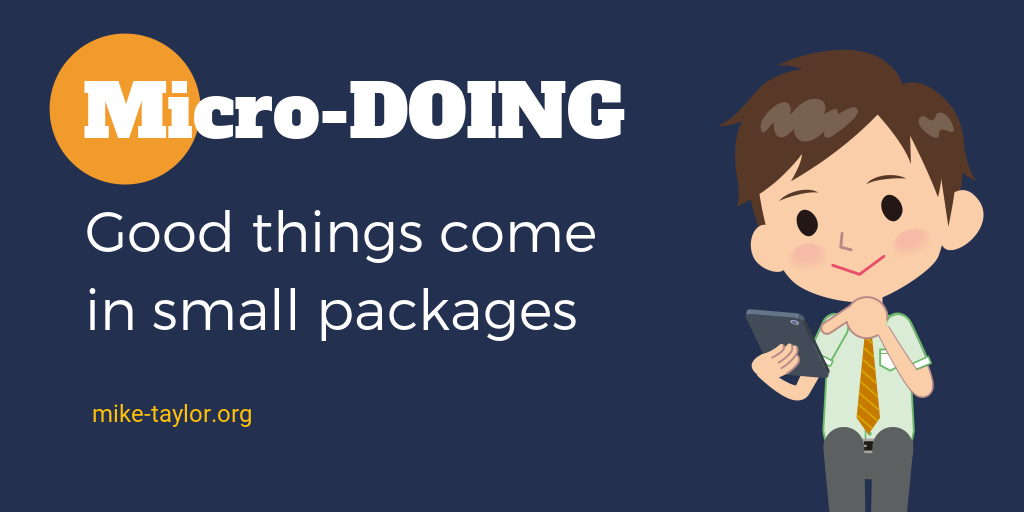Move Over Microlearning: Make Room for Micro-doing
Unless you’ve been off vacationing on Mars, you’ve no doubt heard a lot of buzz about microlearning lately. While I’m not sure what has made it so hot lately, it is definitely not a new idea.
One common challenge is the lack of a clear definition. Lots of people have defined microlearning in lots of different ways. A recent conversation got me thinking about the fact that like any type of learning, the whole point is to answer the question “What can I DO with it?”
Instead of microlearning, I think everyone should be talking about micro-doing.
Remember, “nobody wants to read your SH*T” so I like to think of microlearning as the most efficient, effective way possible to help someone to take action. Make everything you do as short as possible and as long as necessary. Or as JD Dillon says, “learning that fits”.
Starting small also aligns nicely with what we know about moving people to action and forming new habits. The secret is to start incredibly small – the tinier the habit the easier it is to do.
Regardless of the length, frequency or format here are some key characteristics for making you’re learning projects a success:
- Short – Reduce your message to its simplest, clearest, easiest-to-understand form.
- Helpful – This one should be obvious.
- Visual – a picture or short video is much more efficient than lengthy text.
- Findable – Another obvious one. If I can’t find it, what is the point?
- Easily shareable – If it is helpful, I probably know others who could also benefit.
- Actionable – Just do it!
Don’t worry if you’re confused about what microlearning is. It is not a prescribed formula. (Take two three minute videos and call me in the morning.) Learning is messy. As long as you’re aiming for right-sized learning that ends with action you’re on the right track.

5 thoughts on “Instead of Microlearning, it Should Be Micro-doing”